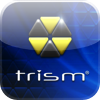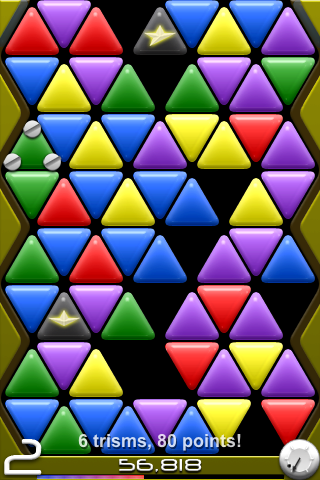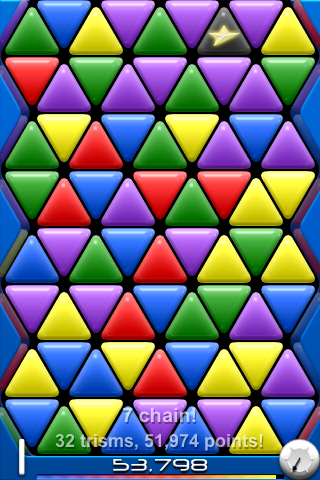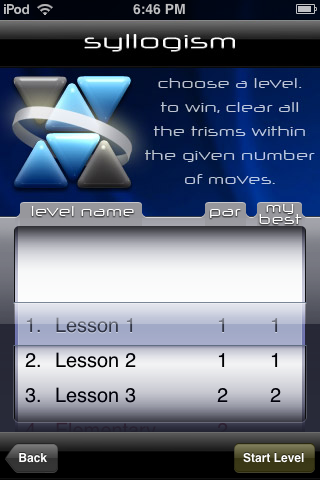Retro Replay Review
Gameplay
Trism makes ingenious use of the iPhone’s touchscreen and accelerometer to deliver a fresh take on the match-three puzzle genre. Instead of dragging rows or columns, you simply tap groups of three or more like-colored triangles (the “Trisms”) to clear them. Meanwhile, tilting the device controls the direction from which new Trisms slide in, making the board itself part of the puzzle. This intuitive control scheme feels effortless once you get the hang of it, and it’s endlessly satisfying to flip your phone to engineer perfect cascades.
As you play, new challenges emerge to up the ante. Some rows get “screwed in,” freezing them in place until you clear specific Trisms; others transform into ticking bombs that will detonate if you linger too long. These mechanics force you to think on multiple levels—managing your tilt direction, prioritizing imminent threats, and looking ahead for combo setups—all while keeping an eye on the clock or bomb timers. The result is a tense, kinetic experience that feels both cerebral and very tactile.
Variety is key to Trism’s long-term appeal. In Infinism mode, you’re free to play until bombs take you out—perfect for stress-free sessions. Terminism turns up the pressure with a constantly ticking timer that you reset by clearing Trisms, ideal for quick, adrenaline-fueled bursts. And Syllogism offers a pure puzzle mode with a limited number of moves to clear the board, rewarding careful planning over fast reflexes. Each mode highlights a different facet of Trism’s elegant mechanics, keeping gameplay feeling fresh and engaging.
Graphics
Visually, Trism embraces a bright, minimalist aesthetic that emphasizes clarity and color contrast. The triangular tiles pop against a clean background, making it easy to distinguish between hues even during frantic chain reactions. The simple palette also helps ensure that the game remains legible under varying lighting conditions—crucial for play on a mobile screen outdoors or in low light.
Animations are delightfully smooth, with Trisms sliding into place fluidly in response to your tilting motions. Clearing a cluster triggers a quick burst animation, rewarding successful combos with satisfying visual feedback. Even the introduction of bombs and “screwed in” rows is handled with crisp visual cues—red outlines for ticking bombs and metal brackets for frozen rows—so you never have to second-guess what’s happening on the board.
Beyond aesthetics, Trism’s graphics excel at functional design. The user interface remains unobtrusive, with essential information like your score, remaining time (in Terminism), or moves left (in Syllogism) displayed clearly but discreetly around the play area. The overall result is a game that looks sharp and performs flawlessly, without unnecessary frills getting in the way of the core puzzle action.
Story
Trism doesn’t weave a traditional narrative; instead, its “story” unfolds through gameplay emotions and emergent puzzle moments. From the first tilt to the seventh-chain combo, you craft your own sense of progression and achievement. This stripped-down approach keeps the focus squarely on the mechanics, inviting players to imbue each session with their own narrative of triumph or near-misses.
One could imagine the board as a mysterious crystalline realm, with each Trism representing a fragment of an ancient artifact waiting to be reassembled. Your role as the solver becomes an explorer and restorer, using deft swipes and strategic angles to breathe new life into a dormant geometric world. The occasional threat of bombs or locked rows adds a dash of peril, turning each cleared cluster into a small victory against entropy.
By forgoing a set storyline, Trism lets its mechanics become the star. Each game mode hints at a different narrative rhythm: Infinism’s endless ebb and flow feels like an exploratory expedition, Terminism’s ticking clock delivers a pulse-pounding rescue mission, and Syllogism’s strict move limits play out as carefully plotted tactical assaults. In this way, the game’s “story” lives and breathes within the puzzles themselves.
Overall Experience
Trism stands out as one of the earliest titles to truly capitalize on the iPhone’s unique hardware, and its design still holds up remarkably well. The blend of touch and tilt controls feels novel even today, and the puzzle mechanics strike a perfect balance between accessibility for beginners and depth for seasoned players. You’ll find yourself experimenting with angles, hunting for massive combos, and developing strategies to juggle bombs and locked rows simultaneously.
While purists might yearn for more bells and whistles or a fuller narrative, Trism’s strength lies in its elegant simplicity. Load times are negligible, the learning curve is gentle, and each mode provides distinct challenges without ever feeling repetitive. It’s an exceptional title for short commutes, quick brain-teasers at lunch, or extended sessions when you’re chasing that high-score adrenaline rush.
All told, Trism remains a shining example of mobile puzzle design done right. It leverages hardware intuitively, delivers tight mechanics, and offers enough variety to keep you coming back. If you own an iPhone and enjoy thinking in triangles as much as you enjoy tilting them, Trism is an absolute must-have for your collection.
 Retro Replay Retro Replay gaming reviews, news, emulation, geek stuff and more!
Retro Replay Retro Replay gaming reviews, news, emulation, geek stuff and more!









Reviews
There are no reviews yet.